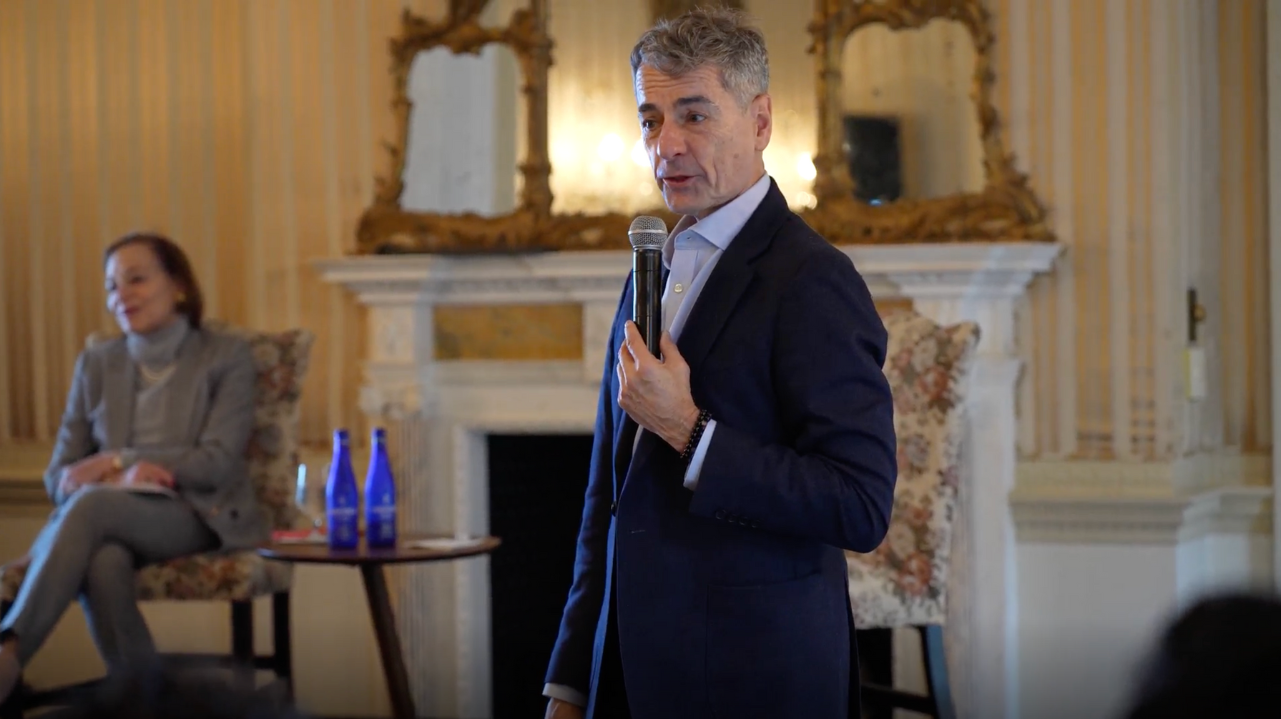Internationalization of the Renminbi and its Implications for the Americas
Internationalization of the Renminbi and its Implications for the Americas
At an AS/COA panel, speakers presented different perspectives regarding the prospects of the RMB as an international currency, the issue of trade settlements, and the outlook for reserve currency status and RMB-denominated investments
Speakers:
- Neil Daswani, Head of Transaction Banking for North East Asia, Standard Chartered Bank
- Ilan Goldfajn, Chief Economist, Itaú Unibanco
- Joseph Leahy, Brazil Bureau Chief, Financial Times
- Julio Rojas, Global Head of Financial Institutions, Standard Chartered Bank (Introductory Remarks)
- Moderator: Randy Melzi, Senior Director of Policy Programs, Americas Society/Council of the Americas
Summary
Americas Society/Council of the Americas organized a May 20 panel discussion on the internationalization of the renminbi (RMB)—the first in a series on Asia-Latin America trade programs sponsored by Standard Chartered Bank. Speakers presented different perspectives regarding the prospects of the RMB as an international currency, the issue of trade settlements, and the outlook for reserve currency status and RMB-denominated investments, specifically addressing the economic and political implications of the increasing use of the RMB in Latin America for governments and corporations.
Welcoming Remarks
AS/COA Senior Director Ragnhild Melzi welcomed the audience and briefly spoke about China’s plans for the RMB to become an international reserve currency and its significant impact, not only in Latin America, but globally. She pointed out that trade between China and Latin America increased from $8 billion in 1999 to $130 billion in 2009. Moreover, Chinese investments in Latin America were $15 billion in 2010, thereby doubling the total of China’s accumulated investments in the region over the past two decades.
Introduction by Julio Rojas
Standard Chartered Bank’s Julio Rojas opened the discussion by saying: “China is a powerhouse.” Rojas emphasized China’s relevance, as it is the second largest economy in the world and is projected to become the world’s largest economy within the next 20 years. China's total trade in 2010 surpassed $2.97 trillion dollars and it is expected to double by 2015. In his view, RMB internationalization is developing faster than expected. In 2009 none of the Chinese total trade was settled in RMB. By 2010, that percentage increased to 2.5 percent and by the first quarter of 2011 it went up to 7.5 percent. Estimates indicate that by 2015 it will account for 20 percent of China’s total trade.
What is driving the internationalization of the RMB?
Standard Chartered Bank’s Neil Daswani agreed with Julio Rojas that the internationalization of the RMB is developing quickly and added that there is a great amount of discussion regarding this issue. But, the drive for it must be a recognized need for it between buyers and sellers—“an agreement between the two principal parties, from a supply-chain economics point of view”—to further the process and redenominate their trades. According to Daswani, the internationalization is being driven by different characters, but a “shift in the center of gravity from the West to the East” can already be seen, stemming from China’s increasing involvement in global trade flows.
China and Latin America’s Complementary Economies
Itaú Unibanco’s Ilan Goldfajn described major economic trends involving Asia and Latin America. He mentioned that the trade flows between China and the Americas grew almost six fold in the last decade, increasing from $57 billion to $310 billion. China has not only become the main partner of Brazil, but is now responsible for 15 percent of the export and import flows. According to Goldfajn, China should be seen as a complementary partner for Latin America and described it as “the other half of Latin America.” One factor supporting this complementary relationship is that 2000 to 2010 was an extremely positive period for Latin America, characterized by high economic growth, diminishing poverty, and rising income.
Projecting China Abroad: a State Plan
A financial journalist in Asia before moving to Brazil earlier this year, Financial Times’ Joseph Leahy, spoke about companies that could be seen as early movers as the RMB gained international prominence. Leahy commented on the effects of the internationalization of the RMB on Sino-Brazilian relations, agreeing with Daswani and Goldfajn that this relationship will become more complex and extremely important to Latin America. Nevertheless, Leahy reinforced the notion that there is still a long way to go and that China has key challenges to face. For example, in the case of Latin America, the main part of the trade going into China is denominated in dollars. He gave the example of Brazilian companies like Vale and Embraer, which now have operations in China, and still have a large dollar component to their operations.
Moving away from the private-sector perspective, Leahy emphasized that “this is a Chinese State project” and differs from what happened in the past, when the British pound and the U.S. dollar naturally became international currencies. But, as Rojas posited in his introductory remarks: “Will we see history repeat itself, and in the same way the U.S. dollar replaced the British pound as a major currency, will the Renminbi replace the U.S. dollar?” Thus far, we can only say that it has a long way to go, according to the panelists.








